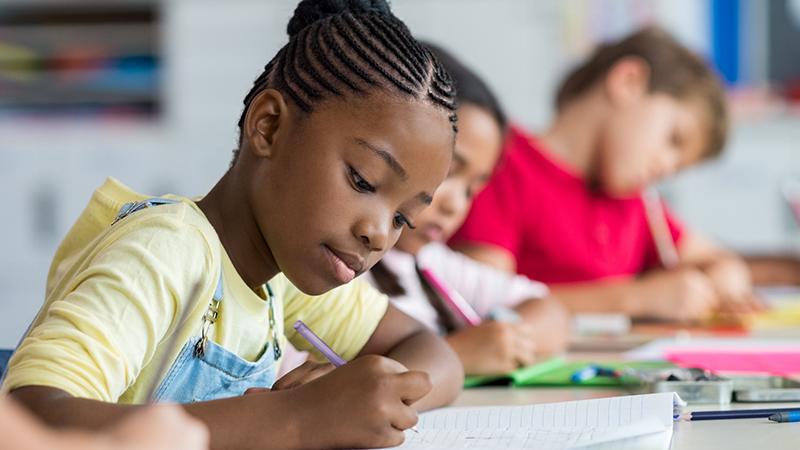Story writing activities are a popular method for developing and measuring writing ability, literacy skills, and language development in the classroom. In traditional story writing activities, verbal (linguistic) learners usually shine, but it’s important to think about all of your students’ learning styles and abilities when designing these lessons.
In order to support spatial and auditory learners, English Language Learners, and students with special needs, traditional story writing activities need to be revamped to showcase and emphasize the strengths of all students.
Give Students a Choice!
Allowing students to choose their own activity will not only give them a feeling of ownership, but it will also intensify their interest in the assignment. Providing choices also gives you the opportunity to differentiate your lessons so that every student will find something they are good at, are excited about completing, and will remember for years to come.
Aside from the traditional, pen and paper story writing assignment, here are seven story writing activity options that will pique your students’ interests in literacy:
1. Graphic Novels
There are many resources out there about how to study graphic novels in the classroom to promote literacy, but you can also excite your students by having them create their own comic strip or graphic novel. An exciting twist on the traditional illustrated story/text, graphic novel creation will appeal to visual learners as they design illustrations and the accompanying text bubbles for their creations. ELLs and students with special needs will also enjoy working with graphic novels because they offer visual reinforcements to support their language and content development.
2. Act it out
Offer students the option to be playwrights by writing and acting out a scene of a play for the class. This will tap into students’ creative sides and also appeal to your kinesthetic learners. Students can work in small groups, design and use props, and show off their playwriting and acting skills while building their literacy.
3. Video
It’s important to give digital natives opportunities to use new technologies in the classroom. You can jazz up the playwright project by asking students to record a YouTube or Vimeo video in which they act out a scene. Auditory learners can also create and tell a story through writing a song and recording a music video for their song. You will be amazed at how talented and creative your students can be when given opportunity and tools.
4. Podcast
Speaking of technology and auditory learners… thanks to the popularity of Serial, podcasts are a current and well-known storytelling technique that you can get your students excited about using. Ask your students to write a story in the genre of a news report, record a podcast, and share it with the class. Students can get their classmates involved by interviewing them and including sound bites in their podcasts.
5. Blogs
To add a creative technology component to a traditional writing assignment, ask students to write a series of blog posts from the perspective of a fictional character. For visual learners you can ask students to upload pictures to help readers envision what is being described in the blog (who doesn’t love a photo shoot?). Students can also upload any videos and/or music they create to accompany their writing.
6. Digital Books
You can continue to embrace students’ tech savvy sides by allowing them to write, illustrate, and publish their own books online. There are a number of online resources out there:
- Storybird allows students to choose from a variety of art sets and use the images to create online storybooks
- Storyjumper allows students to use a variety of clipart in their online storybooks. They can also upload their personal photographs.
With both Storybird and Storyjumper, students can create their books online and order hardcover copies to be delivered. Imagine how excited your students will be to show off their masterpiece to the class and their parents/guardians!
One last note about digital books: For spatial learners, ELLs, students from culturally diverse backgrounds, and students with special needs, asking them to illustrate their stories before they write them is a great strategy to ease the stresses of writing and to boost their confidence in completing the project.
7. Collaborative Writing Activities
Provide your students with opportunities to work with their classmates on assignments, like in the playwright, video, and podcast examples introduced above. Collaboration is an excellent strategy to appeal to a range of your students’ learning styles. Small group story writing will encourage students to participate within a group and build interpersonal and communication skills. You can also create a whole class collaborative writing activity.
There isn’t one right way to incorporate writing activities in your classroom. The most important thing is to consider all of your students and to find their interests, skills, and comfort levels to ensure everyone is engaged in and getting the most out of the project.






